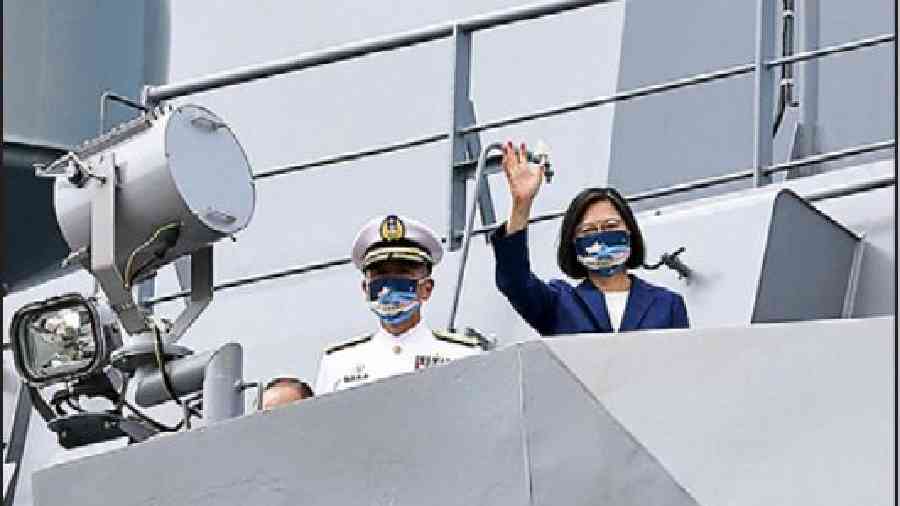American officials are intensifying efforts to build a giant stockpile of weapons in Taiwan after studying recent naval and air force exercises by the Chinese military around the island, according to current and former officials.
The exercises showed that China would probably blockade the island as a prelude to any attempted invasion, and Taiwan would have to hold out on its own until the US or other nations intervened, if they decided to do that, the current and former officials say.
But the effort to transform Taiwan into a weapons depot faces challenges.
The US and its allies have prioritised sending weapons to Ukraine, which is reducing their stockpiles, and arms makers are reluctant to open new production lines without a steady stream of long-term orders.
And it is unclear how China might respond if the US accelerates shipments of weapons to Taiwan, a democratic, self-governing island that Beijing claims is Chinese territory.
President Biden said last month that the US is “not encouraging” Taiwan’s independence, adding, “That’s their decision.”
Since 1979, Washington has had a policy of reassuring Beijing that it does not support independence. But China’s foreign minister, Wang Yi, said in a speech at the Asia Society last month that the US was undermining that position “by repeated official exchanges and arms sales, including many offensive weapons”.
The People’s Liberation Army of China carried out exercises in August with naval ships and fighter jets in zones close to Taiwan. It also fired ballistic missiles into the waters off Taiwan’s coast, four of which went over the island, according to Japan.
The Chinese military acted after Nancy Pelosi, speaker of the House, visited Taiwan. But even before that, US and Taiwanese officials had been more closely examining the potential for an invasion because Russia’s assault on Ukraine had made the possibility seem more real, though Chinese leaders have not explicitly stated a timeline for establishing rule over Taiwan.
The US would not be able to resupply Taiwan as easily as Ukraine because of the lack of ground routes from neighbouring countries.
The goal now, officials say, is to ensure that Taiwan has enough arms to defend itself until help arrives.
Biden said last month that US troops would defend Taiwan if China were to carry out an “unprecedented attack” on the island — the fourth time he has stated that commitment and a shift from a preference for “strategic ambiguity” on Taiwan among US Presidents.
“Stockpiling in Taiwan is a very active point of discussion,” said Jacob Stokes, a fellow at the Center for a New American Security who advised Biden on Asia policy when he was vice president.
“And if you have it, how do you harden it and how do you disperse it so Chinese missiles can’t destroy it?”
“The view is we need to lengthen the amount of time Taiwan can hold out on its own,” he added.
“That’s how you avoid China picking the low-hanging fruit of its ‘fait accompli’ strategy — that they’ve won the day before we’ve got there, that is assuming we intervene.”
US officials increasingly emphasise Taiwan’s need for smaller, mobile weapons that can be lethal against Chinese warships and jets while being able to evade attacks, which is central to so-called asymmetric warfare.
“Shoot-and-scoot” types of armaments are popular with the Ukrainian military, which has used shoulder-fired Javelin and NLAW antitank guided missiles and Stinger antiaircraft missiles effectively against Russian forces.
Recently, the Ukrainians have pummelled Russian troops with mobile American-made rocket launchers known as HIMARS.
New York Times News Service











